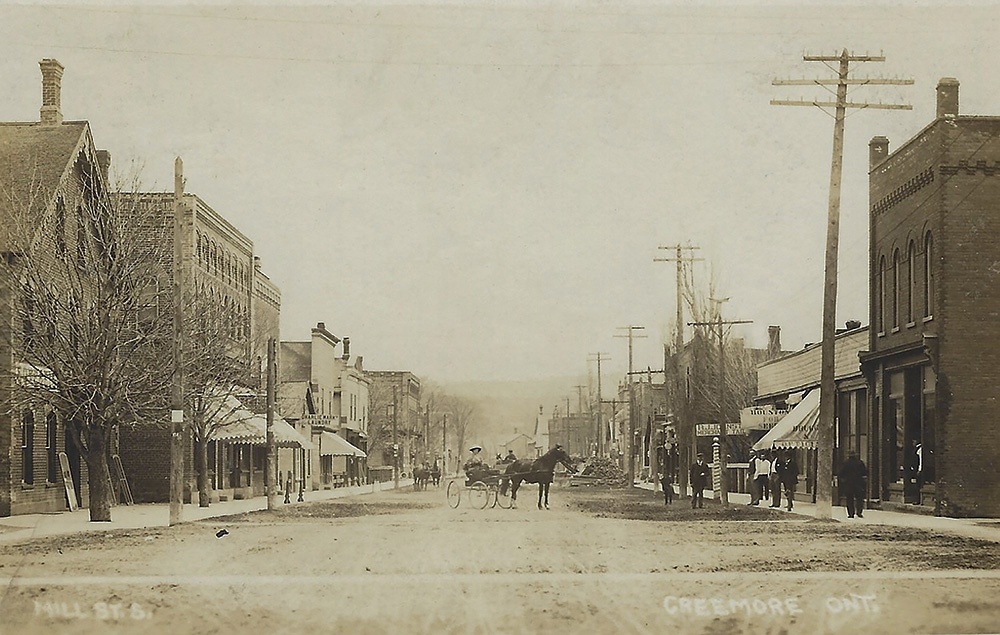
This photo from about 1910 shows the main street in Creemore as an already bustling downtown. Settlement had begun in 1842 and by the turn of the century, Creemore was a thriving village of about 800 people with a vibrant business community. While sidewalks were in place by the time this photo was taken, Mill Street itself wouldn’t be paved until 1928 – an advancement that was cause for a parade and celebration.
Creemore’s name and town origins have strong Irish roots. The village’s founder, Irish entrepreneur Edward Webster, coined the name in 1845 from the Gaelic croí mór, which means “big heart.” Webster paid tribute to his family by naming the original streets after them: Elizabeth and Caroline for his daughters, Francis and Wellington for his sons, Alice and William for his parents.
Edward built mills and streets, opened stores, sat on the first school board, established the first church, and served as postmaster as well as Justice of the Peace. Meanwhile, his brother, George Webster, ran the mills and built three taverns, two stores and some houses. When the railway came to the area, George bought up some land nearby and established the village of Websterville.
Descendants of the Webster founders still live in the area today. ❧











